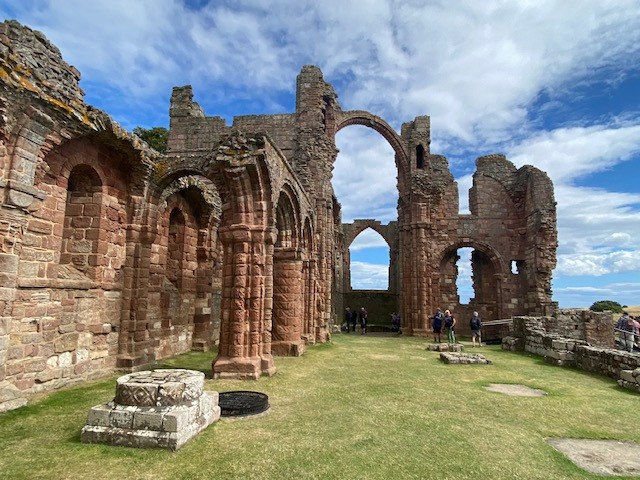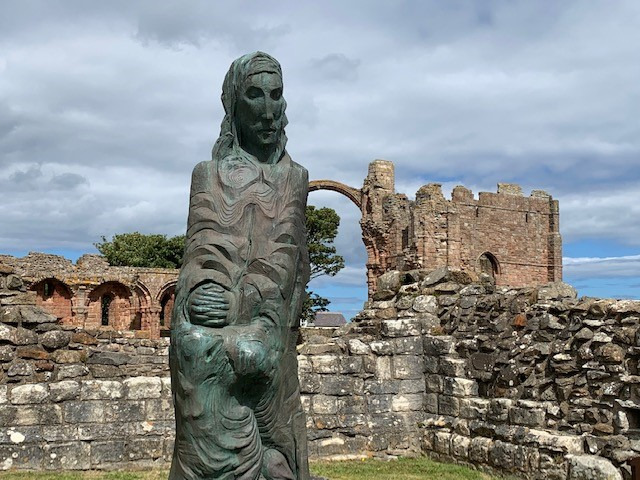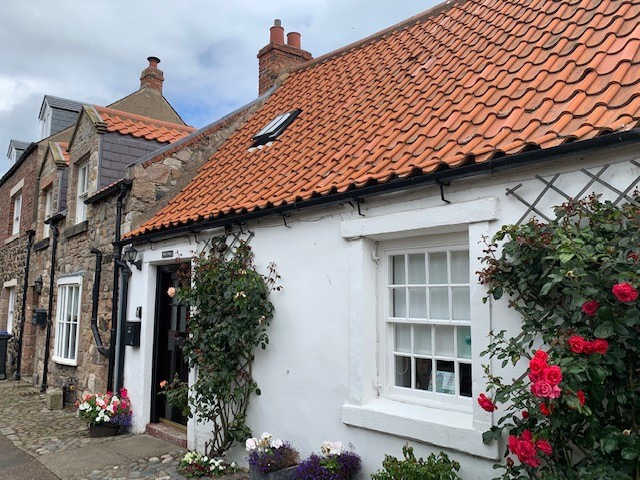search
date/time
 | Yorkshire Times Weekend Edition |

Sharon Cain
Time for Life Correspondent
2:00 AM 27th August 2022
lifestyle
Rugged, Tidal, Bloodshed, Survival: Holy Island
Our Time for Life Correspondent, Sharon Cain, steps back in time on Holy Island, whose Anglo-Saxon name is Lindisfarne, where Vikings spilt the blood of Saints.
Located just a few miles south of the Scottish border, the evocative tidal island is connected to the mainland by a causeway which is flooded twice a day when the North sea gushes in.
Introducing Holy Island
Why Hold Island is inviting and enticing
Sadly, despite, being urged to check the tide times, many motorists misread the times and become trapped on the causeway, prompting the Coastguard crew and RNLI to rescue them.
Over the years, many motorists have come unstuck, including those carelessly parking on the causeway and going off for walks.
Beware Tidal Traps

Tide warnings are prevalent
Tide times for safe crossings can be found around the island and on both sides of the causeway and local shops and cafes can also advise when it’s safe to cross.They can also be found on this official government website.
If, during your visit, you find yourself in trouble or see someone who may need assistance, call 999 and ask for the Coastguard.
Sacred Sanctuary

Dramatic feature: The Rainbow Arch
Described as the ‘Cradle of British Christianity’, a monastic community sprung up on the site from where early missionaries - led by the priory’s founder St Aidan, and St Cuthbert - spread the Christian faith throughout Northern Britain.

Northumbria’s greatest holy man: St Cuthbert
Representing the golden age of design and craftsmanship in Northumbria, the gospels will be on show at the Laing Gallery in Newcastle from September 17 to December 3, 2022.
Unholy Bloodshed
.jpg)
The Priory has religious and historic significance
Following the attacks, which were reported to be the beginning of the Viking Age, it’s believed the monks left the island and roamed for seven years carrying St Cuthbert’s coffin and various treasures.
To keep the priory open, monks from Durham Cathedral set up a Benedictine priory in the 12th century. Fast forward four centuries, and the priory was closed in 1537 by Henry VIII as part of the wider dissolution of the monasteries.
After becoming a storehouse for military supplies, the building fell into decay after led was stripped from the roofs in 1613.
Despite the desecration, the magnificent ruins give visitors a strong insight into the fascinating history.
Life on Lindisfarne

Quaint cottages are dotted around the island
Many have escaped the stress and bustle of city life to relocate and savour a slower pace. Visitors seeking accommodation are advised to book well in advance and overnight stays for caravans and motorhomes are prohibited.
Fortification: Lindisfarne Castle
.jpg)
Highest vantage point: Lindisfarne Castle
Many were constructed in the 15th century to protect England against marauding Scottish armies.
The few which have survived intact include the imposing, dark and brooding Grade 1 listed Lindisfarne Castle. It was built on the highest part of the island around 1550 and initially used as a base for the Tudor navy.
The Castle features in ‘Macbeth’ and ‘The Scarlet Pimpernel’.
Over the next four centuries its chequered history includes being held by Royalist forces, seized by Parliamentarians, and captured by Jacobite’s before becoming a coastguard station.
In 1901 it was purchased by the owner of Country Life Magazine who transformed it into a glamorous residence before it became the property of the National Trust in 1944.
Wondrous Wildlife
.jpg)
200 species of flora
In winter it is home to around 50,000 birds including Ringed Plovers and Oystercatchers, both wading birds. Permanent residents include Eriskay ponies, Soay sheep, and Saanen goats.
.jpg)
Spectacular views: Bamburgh Castle
Just 3 miles from east to west and 1.5 miles from North to South, there is nothing small about this sacred sanctuary which has outlived tumultuous tides and times and shines bright among the jewels in Northumberland’s magnificent medieval kingdom.
Also by Sharon Cain...
Not Living Your Life Your Way? - What's The Delay?Wishing You A Festive 'Vine Time'And Then There Were None: A Killer Of A ThrillerOur Health Is Our Wealth - So Pamper Yourself!Exquisitely Emotional, Bursting With Talent: Jesus Christ SuperstarMore in this series...
Ascending New Wellbeing Heights In ParadiseWanna Be An Extra? Morocco’s Movie Making MagicWhat New Experiences Will Blow You Away?Bellissimo Bilbao - Shimmering Spanish JewelCoastal And Country Treasures: Northumberland’s WonderlandSomewhere For The Weekend : ‘La Dolche Vita’ Welsh StyleWeekend Away: Northumberland: Where Ewe’ll Be Warmly Welcomed!Is Motorhoming For You? – Here’s What Not To Do!Sunshine Beaches And Splashing Waves: Perfect PanaceaBack In Blighty After 2,000 Mile Marathon Across Spain And FranceHomeward Bound - A 96 Hour Journey To The UKWeek 3 Of The Spanish Lockdown: Tips As Cases Surge To All Time HighSpain Closes Ports And Airports And Extends LockdownLa Manga ClubCadizCórdobaVisiting Sierra De Cazorla In AndaluciaFlamingos FantasticosAlluring AlicanteThe Orihuela Costa